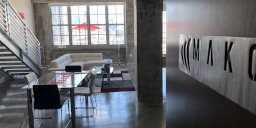“Can’t live with them, can’t live without them.” It’s how we define most, if not all, relationships that mean the most to us. You can’t have pleasure without pain. It can’t be all “take” and no “give.” There needs to be a balance. For obvious reasons, we tend to gravitate towards the relationships that benefit us, and as a startup, inventor, or small business, you need to start looking at your customers the same way.
As a customer yourself, it’s generally painful to be separated from your hard-earned cash or your valuable time. On occasion, you might be willing to use your cash or time when you deem the outcome is more valuable than the cash or time itself. Every transaction is a tradeoff. And the question you should be asking is: do my invention designs that create value and alleviate pain?
The Value Proposition Canvas
Back in April, we talked about these two topics separately. In one article, we talked about how to create value for different customers, specifically when showcasing your invention designs to B2C and B2B customers. In another article, we uncovered how to build a customer profile to help determine who your target customers may be and how they formulate purchasing decisions.
In this article, we’re going to put both concepts together and introduce a tool that will help ensure your invention design addresses a customer’s value or need. This tool is called the Value Proposition Canvas.

Derived from the Value Proposition and Customer Segments sections of the Business Model Canvas, the Value Proposition Canvas was also created by Dr. Alexander Osterwalder. Like the BMC, the VPC will help you map out your thoughts and test how you create value, but specifically for your customer rather than with your entire business. As you can see in the picture above, it’s divided into two groups. The Value Map and the Customer Profile. The goal is to find the right fit between these two groups.
Customer Profile
- Jobs: These could be functional jobs. They could be social jobs that we do in order to work with others. These could also be emotional jobs that, when completed successfully, give us a higher sense of self-worth. Whatever the job is, the invention design should focus on one or two jobs.
- Pains: Things that frustrate, bother, or create risk for your customers when they complete the job. Don’t lie, I know for many, it was a pain to put on pants for Zoom meetings… just in case.
- Gains: The beneficial results that your customers enjoy for completing the jobs mentioned above. Your invention design will want to focus on how to help the customer gain in an area of their life.
Value Map
- Products & Services: The invention designs that create value to provide gains while alleviating pains.
- Pain Relievers: In this section, list out how your product helps your customers alleviate frustrations and risk when completing jobs
- Grain Creators: How your product provides, increases, or maximizes benefits for your customer.
The items you list in the Value Map should target specific jobs, pains, and gains in the Customer Profile. Be honest with your product here as well as these two groups aren’t mutually exclusive. In fact, if an invention design trys to alleviate too many pains or provide too many gains, then it might be too expensive or difficult to use for your customers.
Essentially, you’ve just added two new pains for the customer, which might not outweigh the value your product provides. Again, this is just another reason why we advocate for a simple product! Remember, the first few VPCs you create will serve as a hypothesis. You’ll need to get a prototype in the hands of your customers to get real feedback about your product to refine your VPC.

If you have a great new invention and you’d like to learn more about this process, get in touch with MAKO today and visit our website to find out more. Or feel free to give us a call at 1-888-MAKO, and we can set you up on a call with our product strategist!
About: MAKO Design + Invent is the original firm providing world-class consumer product development services tailored to startups, small manufacturers, and inventors. Simply put, we are the leading one-stop-shop for developing your physical product from idea to store shelves, all in a high-quality, cost-effective, and timely manner. We operate as one powerhouse 30-person product design team spread across 4 offices to serve you (Austin, Miami, San Francisco, & Toronto*). We have full-stack in-house industrial design, mechanical engineering, electrical engineering, patent referral, prototyping, and manufacturing services. To assist our startup and inventor clients, in addition to above, we help with business strategy, product strategy, marketing, and sales/distribution for all consumer product categories. Also, our founder Kevin Mako hosts The Product Startup Podcast, the industry's leading hardware podcast. Check it out for tips, interviews, and best practices for hardware startups, inventors, and product developers. Click HERE to learn more about MAKO Design + Invent! *NOTE: Engineering services are provided exclusively by our USA-based engineering team







